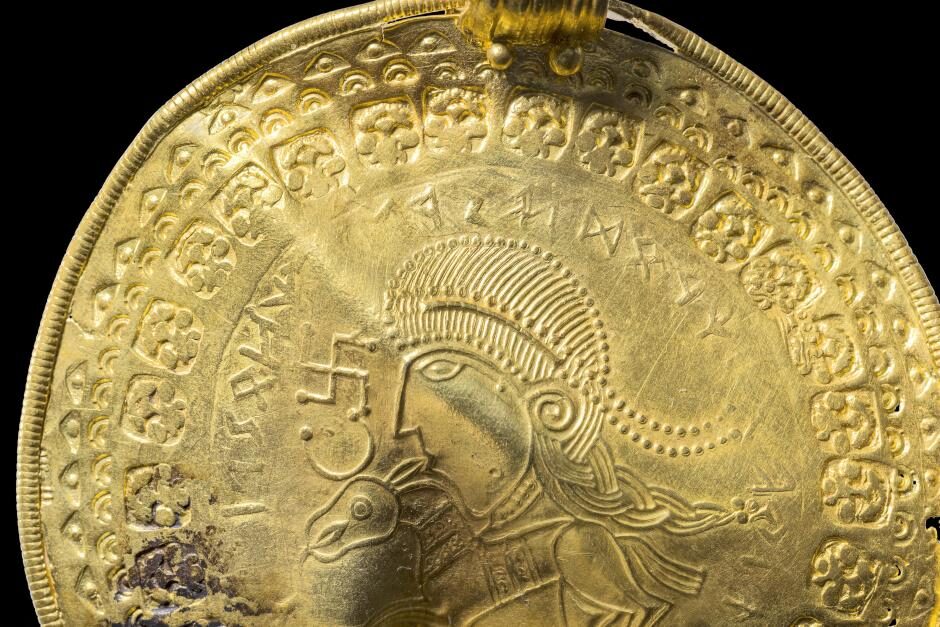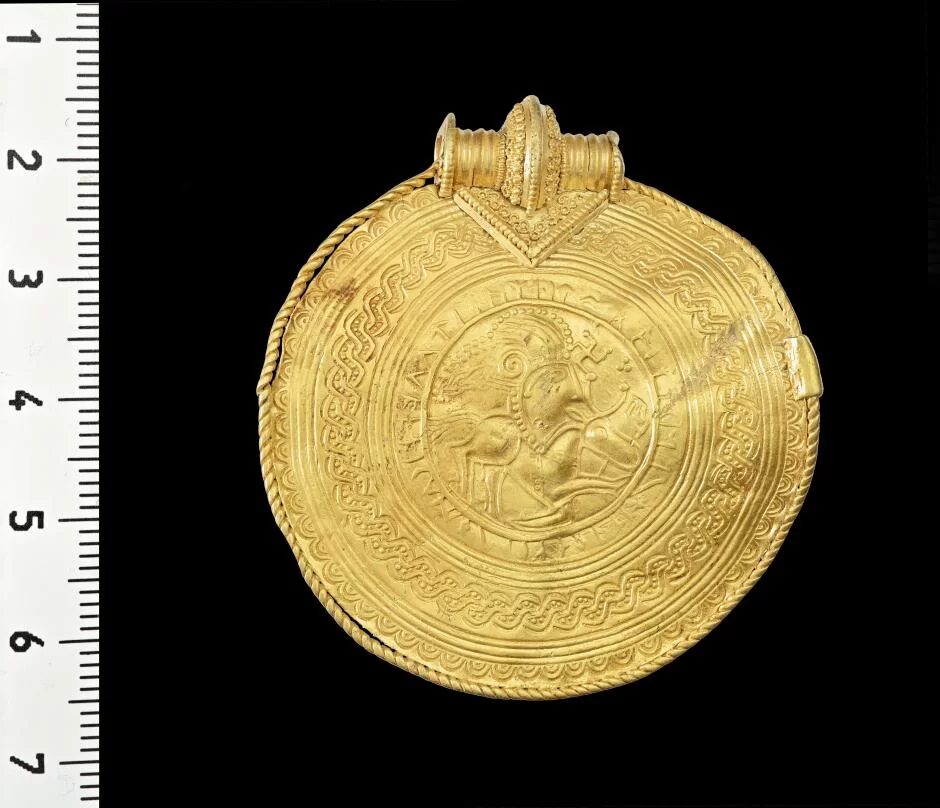
Lisbeth Imer, a runologist with the National Museum in Copenhagen, said the inscription represented the first solid evidence of Odin being worshipped as early as the 5th century — at least 150 years earlier than the previous oldest known reference, which was on a brooch found in southern Germany and dated to the second half of the 6th century.
The disc discovered in Denmark was part of a trove containing about a kilogram (2.2 pounds) of gold, including large medallions the size of saucers and Roman coins made into jewelry. It was unearthed in the village of Vindelev, central Jutland, and dubbed the Vindelev Hoard.
"It's one of the best executed runic inscriptions that I have ever seen," Imer said. Runes are symbols that early tribes in northern Europe used to communicate in writing.

More than 1,000 bracteates have been found in northern Europe, according to the National Museum in Copenhagen, where the trove discovered in 2020 is on display.
Krister Vasshus, an ancient language specialist, said that because runic inscriptions are rare, "every runic inscription (is) vital to how we understand the past."
"When an inscription of this length appears, that in itself is amazing," Vasshus said. "It gives us some quite interesting information about religion in the past, which also tells us something about society in the past."
During the Viking Age, considered to be from 793 to 1066, Norsemen known as Vikings undertook large-scale raiding, colonizing, conquest and trading throughout Europe. They also reached North America.
The Norsemen worshipped many gods and each of them had various characteristics, weaknesses and attributes. Based on sagas and some rune stones, details have emerged that the gods possessed many human traits and could behave like humans.
"That kind of mythology can take us further and have us reinvestigate all the other 200 bracteate inscriptions that we know," Imer said.



Reader Comments
Today it's a corrupted symbol of gender dysphoria.
i^2 = j^2 = k^2 Hamiltonians are necessary to understand the chirality of EM.
Spirals are spinning with velocity
Easier for people to see than workout the JEW vs JEW crisis acting in the news everyday....
To erase the division of the BRHMN called Judah, the Priests now have a subdivision pretending to be Jews, along with some genuine specimens, doing all the evil bits of their world domination.
Please understand history?
Hitler wasn't entirely stupid... Hell, most psychopaths are quite intelligent... And I think he used that symbol for the exact meaning which it used to imply - protection.
The Norse picked up a number of symbols during their travels and raids. Sounds like many other religions, especially Catholicism/Christianity as they picked up a TON of pagan spiritual beliefs and made it seem like their own.
Orwell strikes again: Agatha Christie classics latest to be rewritten for 'modern sensitivities'
Poirot and Miss Marple mysteries have original passages reworked or removed in new editions published by HarperCollins. Agatha Christie novels have been rewritten for modern sensitivities, The...It will answer some questions for you.
Also, we learn these things 3 years later, as the elites who fund these operations get first dib's on the info of any discovery and only release the bits they want us to know.